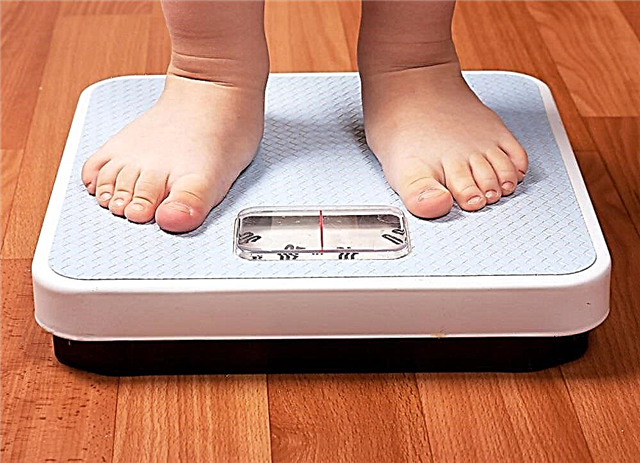
One of the most wonderful and healthy exotic fruits is avocado. Currently, it is gaining more and more popularity. This is largely due to the excellent combination of nutrients, vitamins and trace elements that make up it. Many mothers are faced with questions whether it is possible to introduce this exotic healthy fruit into the children's diet and at what age it can be done.


Benefit
The chemical composition of avocado contains a wide variety of beneficial chemicals:
- Polyunsaturated fatty acids in high concentrations. They have a beneficial effect on the lipid composition of the blood and gently reduce the level of bad cholesterol. As a result, the likelihood of the formation of atherosclerotic plaques on the blood vessels decreases, and life expectancy increases. For a baby, polyunsaturated acids have a beneficial effect on the nervous system and normalize excessive excitability.
- Fat-soluble vitamins (A, D, E), as well as water-soluble vitamins of group B, PP, ascorbic acid. They are vital elements for the implementation of all reactions in the body. Provitamin A promotes excellent vision and improves brain function. B vitamins are needed for the nervous system to function properly and to feel good. A large amount of vitamin E has a beneficial effect on the condition of the skin. This property of the tropical fruit is perfect for teenagers who have problems with acne or acne during puberty.
- A varied cocktail of beneficial trace elements (sodium, calcium, potassium, magnesium and many others). The potassium in avocados helps the heart work and reduces the likelihood of arrhythmias in a child. Sodium and calcium affect the body's water-salt balance and contribute to the excellent functioning of the kidneys and urinary tract.
- Natural phytohormones. Adding 1⁄4 pcs. avocado in the diet of a teenager over 12 years old helps to normalize hormonal levels.

You can learn more about the benefits of avocados from the Live Healthy program.
Harm
When eating an avocado, you should pay attention to the fact that its seeds contain a fairly large amount of toxic substances. Before using it, it should be thoroughly washed, peeled and removed. If the stone has disintegrated or scales remain on the pulp of the fruit, they should also be removed or peeled with a knife.
Before introducing avocado into a child's diet, it is imperative to check if he has an individual intolerance. For this, it is enough to give no more than 1⁄2 teaspoon for the first injection. Look at the child's reaction. If, after the introduction of the product, he does not have an itchy skin rash, dry cough, diathesis and the temperature does not rise, you can slowly add more and more to the diet.


At what age can you give?
Pediatricians do not have clear recommendations on the timing of the introduction of avocados into the diet. The only thing that doctors unanimously agree on is that this product is prohibited from using in food for children under one year old. It is also important to note that it is also undesirable for nursing mothers to consume avocados during lactation. This can provoke a strong allergic reaction in the baby to a new product through breastfeeding.


Many experts still recommend introducing all tropical fruits and fruits after the age of 3 years. At this time, the immune system is already quite effectively tuned in to recognize products unfamiliar before this age. The organs of the baby's gastrointestinal tract are not ready to digest enough fatty foods.
Eating avocados in babies under the age of 2.5-3 years can provoke stool disorders.

Features of the introduction to the diet
Introducing avocado into the baby's diet should be gradual. The first portion should be no more 1⁄2 teaspoon, with the gradual addition of the product. For kids aged 5-7 years, 1/8 of a ripe avocado per day is enough. For kids with 7-13 years can be used 1⁄4 part of a medium-sized fruit. Teenagers can eat no more than half an avocado during the day.


How to serve?
Avocados for babies are best served puree, crushed to a state. It goes well with a variety of fruits and vegetables. You can prepare various mixtures - mashed apples, pears, sweet plums. Avocado also goes well with banana.
The large amount of polyunsaturated acids contained in avocados does not allow the use of this fruit for heat treatment.


It is best to eat the avocado fresh, without boiling or baking. So in it all natural vitamins and nutrients are better preserved, there is no bitterness.


How to choose?
When choosing a fruit, pay attention to the fact that it is soft enough. When making a selection in the store, take a fruit and press on it with your finger. If there is a dent left, it's good enough to be eaten. Do not take rotten or spoiled fruits! Eating low-quality avocados can cause an eating disorder.
Avocado is an excellent source of many nutrients necessary for the growth and development of a child's body. Possessing a sufficiently high calorie content, it perfectly saturates and provides a sufficient amount of energy for the active life of the baby.


Every mother knows that feeding a child tasty and healthy always leads to a whole problem. Avocado and banana smoothie is Mom's trick to give kids the vitamins they need. A detailed video is attached.
Find out if your child's weight is normal using the following calculator.



